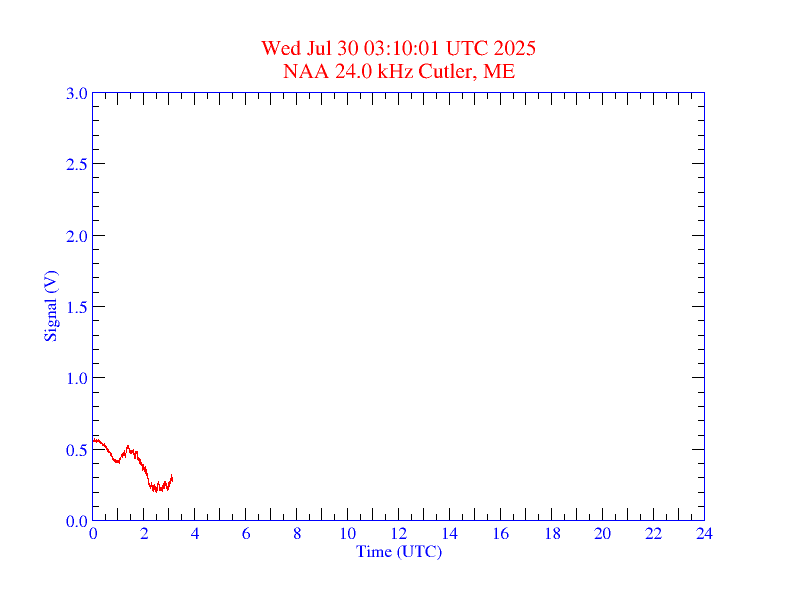

This resource provides a continuous record of the reception at Moore Observatory in Brownsboro, Kentucky, of the very low frequency (VLF) 24 KHz signal from NAA in Cutler, Maine.
During daylight hours over the path to this source the strength of the reception is modified by solar activity, and a sudden change in the level usually indicates that a solar flare has occurred. The receivers are sensitive to C-class or stronger flares, those that cause an x-ray flux increase of a few microwatts per square meter in the 1 to 8 Angstrom band monitored by the GOES satellites. It also responds to strong gamma-ray bursts.
We automatically record the 24 KHz signal from NAA, and maintain an archive of the original data with plots of daily graphs. NAA is an indicator of solar flare activity from about 13h to 21h UT during the winter, and from 9h to 1h UT during the summer. Examples of exceptional events are cataloged with corresponding SOHO images and GOES flux measurements when available. The American Association of Variable Star Observers Sudden Ionospheric Disturbance (AAVSO-SID) website provides current information about solar flares and the ionosphere.
Last update: January 26, 2023
kielkopf at louisville dot edu